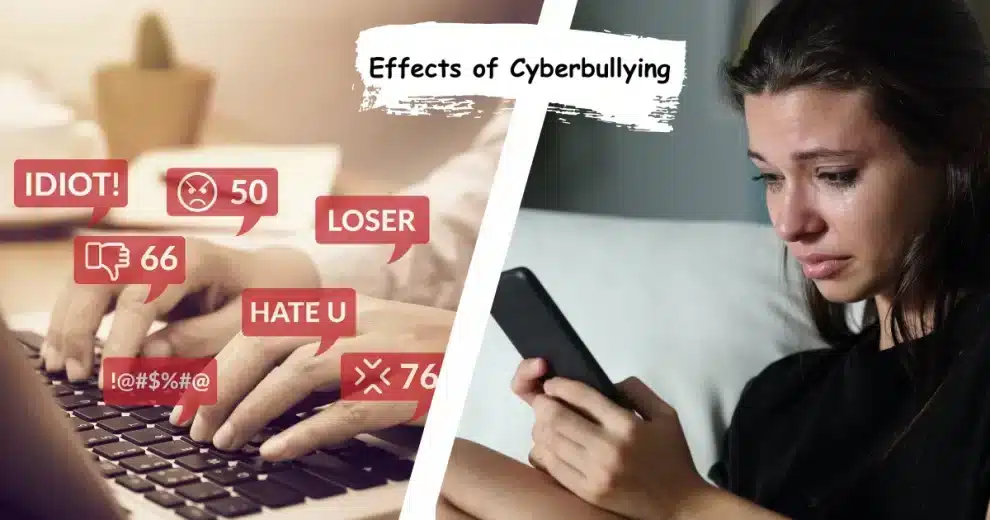The world we live in is definitely a cyber world. Even small day-to-day tasks have been connected to the internet. The technologies that we take for granted are something that we would not even have considered a decade ago. If you are anything like me, your shopping list is on your phone, and you can instantly share it with your spouse or kids. This internet connectivity has some hidden costs that you may not have considered before. We have been online for a generation now, and we used to face bullies in a straightforward and personal way. Bullies are now a constant online presence and invade every facet of our online lives. Bullies take many forms online, from the lowliest Facebook troll and youtube troll to the more angry and loud, obnoxious cyberbullies. These people hide behind their screens without any fear or concern of retaliation for their actions. What’s worse is that these bullies are invading every facet of our online lives. We can’t escape them, no matter how much we try.
The internet has given people we would never otherwise have contact with an anonymous method to spread hate and discontent and create the drama that empowers them. The environment on open discussion forums is an environment where the scourge of bad behavior is rampant. Bullies hide behind their screens without concern or fear of retaliation for their behavior.
Cyberbullying Statistics
Table of Contents
| Statistic | Details | Source |
|---|---|---|
| General Prevalence | Over half of students have experienced cyberbullying | StopBullying.gov |
| Most Affected Groups | Girls and LGBTQ+ students are more likely to be victims than boys and heterosexual students | Pew Research Center |
| Common Platforms | Most common on YouTube, Snapchat, TikTok, and Facebook | Security.org |
| Daily Occurrence | 38% experience it daily on social media platforms | Cybersmile Foundation |
| Consequences | Can lead to depression, anxiety, self-harm, and suicide | National Bullying Prevention Center |
Additional Concerning Statistics
- Foreign national students experience more cyberbullying than locally-born counterparts.
- Cyberbullying is the number one concern for school staff.
- 25% of students who are cyberbullied turn to self-harm to cope.
Symptoms of Cyberbullying
Cyberbullying can take many different forms, but there are some common symptoms that individuals may display if they are being bullied online. Here are some of the most common symptoms:
 1. Anxiety and Depression
1. Anxiety and Depression
Individuals who are being cyberbullied may exhibit signs of anxiety or depression. This could include feeling sad, crying, or isolating themselves from others.
2. Poor Performance in School or Work
Cyberbullying can have a negative impact on an individual’s academic or work performance. This could be due to the stress and anxiety caused by the bullying.
3. Changes in Behavior
If an individual is being cyberbullied, they may experience changes in behavior such as becoming more aggressive or irritable.
4. Withdrawal from Social Activities
Cyberbullying can cause an individual to stop participating in social activities. This may include avoiding friends or family, or avoiding online social media platforms altogether.
5. Physical Symptoms
Some individuals who are being cyberbullied may display physical symptoms such as headaches, stomachaches, or difficulty sleeping.
Statistics on Cyber Bullying

1. According to a survey conducted by the Cyber bullying Research Center, 34% of students in the United States have experienced cyber bullying.
2. A study by the Pew Research Center found that 59% of teens have experienced some form of cyber bullying.
3. The National Crime Prevention Council reports that more than 50% of young people have experienced cyber bullying.
4. Girls are more likely to experience cyber bullying than boys. According to a study by the Cyber bullying Research Center,c37.5% of girls reported being cyberbullied, compared to 29.2% of boys.
5. Cyber bullying can have severe consequences. The same study by the Cyber bullying Research Center found that 34% of individuals who were cyberbullied experienced symptoms of depression.
6.Suicide- Studies have found that cyber bullying is a significant predictor of suicidal ideation and suicide attempts among adolescents. Research conducted by the Cyber bullying Research Center found that victims of cyber bullying were almost two times more likely to consider suicide compared to those who never experienced it. Moreover, the study showed that cyber bullying victims who also witnessed other forms of bullying, including physical bullying and verbal abuse, were almost three times more likely to contemplate suicide.
What is a “Cyberbully”
Unlike traditional bullying, which usually happens in person, cyberbullying refers to bullying that takes place on digital platforms such as social media, internet forums and discussion boards, texting, and gaming. It involves using electronic communication to intimidate, harass, insult, or threaten someone.
Typical internet bullies lack any constructive input and instead focus on nitpicking, belittling, and bothering others. They often use aggressive language that is intended to offend and create a hostile environment.
Cyberbullies can not stand not getting their way, disagreeing on any matter, or having someone counter their perspective. They are childish and irrational, and they often resort to name-calling, profanity, and even threats when they can’t get their point across. They fail to understand that everyone has different opinions and beliefs and don’t tolerate opposing views.
Cyberbullies hide behind usernames and avatars and feel empowered to say what they want without fear of retribution. They often target people they perceive as weaker or unable to defend themselves online. They tend to focus on the particular weaknesses or insecurities of the person they’re attacking, such as their gender, race, age, or political views.
Bullies were once mostly relegated to our schools’ hallways and sports fields. Still, Cyberbullying is not just a problem for teens and children but is something that each of us, from youth to adult, can be faced.
Cyberbullies and our children

The National Center for Education Statistics reports the percentage of public schools that reported cyber bullying was roughly doubled in 2019–20
PEW Research Center report- Teens and Cyberbullying 2022 Nearly half of U.S. teens have been bullied or harassed online, with physical appearance being seen as a relatively common reason why. Older teen girls are especially likely to report being targeted by online abuse overall and because of their appearance.
Very little research was done until recently on cyber bullying of “Tweens,” 9-12 year-olds. When we talk about cyber bullying, we generally focus on teens, and there is a higher incidence among teens. Make sure that you are aware of the online activity and social media activity of your tweens as well. In 2020 it was estimated that 20 percent of 9-12-year-olds had experienced some form of Cyber bullying.
With the amount of time that an average teenager spends online, the likelihood of becoming engaged in cyber bullying increases. The incident of online bullying increased substantially during the COVID pandemic. During the COVID-19 pandemic, with schools closed and social distancing measures in place, many teenagers spent more time online than ever before. The anonymity of online platforms makes it easier for bullies to attack other kids. They can easily hide behind fake usernames and profiles, often making identifying the bully challenging.
Cyber Bully Platforms
 Social media platforms
Social media platforms
Social media platforms like Facebook, Twitter, Instagram, and TikTok can be breeding grounds for cyberbullying. These platforms allow users to interact and engage with others. Still, unfortunately, it also makes it easy for bullies to target their victims. Cyberbullies may send hateful messages, post hurtful comments, and spread rumors about others. They may also create fake profiles, impersonate others, and post compromising photos or videos to humiliate their victims.
Messaging apps
Messaging apps like WhatsApp, Telegram, Snapchat, and Kik are also popular targets for cyberbullies. These apps allow users to communicate with others privately, making it easy for bullies to target their victims without anyone else knowing. Cyberbullies may send hurtful or threatening messages or share sexually explicit content without consent. These messages can be especially harmful as they are often seen by only the intended victim, making it difficult for them to reach out for help. If your children receive messages like this, the first thing to do is copy them and document the conversation.
Online gaming communities

Online forums and comment sections
Online forums and comment sections on websites can also be a target for cyber bullies. These platforms allow users to share their opinions and thoughts with others, which can lead to heated debates and disagreements. Cyberbullies may use these forums to post hateful comments or spread rumors about others. They may also target specific individuals and harass them in public forums. This may be an area where bullying of adults is more common, but any open forum that allows public comment is open to bullies and trolls as well.
Text messaging
Sometimes cyberbullying is not anonymous but is very overt. Receiving threats and objectionable messages on your mobile phone is another form of cyberbullying. Sometimes the vitriolic comes directly to you from someone you know.
We experienced this exact scenario with our daughter. When our daughter was 12 years old, she received a message from a classmate that surprised me with how colorfully hateful the message was. The language was exceptionally graphic and disgusting, not something you would expect to be coming from a tween girl. We took action immediately and saved the offending message. We contacted the school ( this occurred during school hours) and set a meeting with the principal. We were able to get a meeting with the author of the text and discuss it with the other parents. In the end, we found that there was a larger issue involving peer pressure to act out, but we were able to put a stop to this before it was able to grow into a more severe situation. As adults, we need to be active in assisting our kids with issues that come up; we are as responsible as any to ensure that our kids are not bullied; we can not leave this as a chore to be taken care of by teachers and school administrators. We are the front line.
The First Steps

The best thing that we can do is take a proactive approach to prevent online bullying, but more so in teaching kids about digital citizenship, online safety, and how to responsibly use technology. As adults, we have much more experience than our children will ever give us credit for, and this includes managing confrontation. Kids need to feel safe and comfortable to bring us any bullying situation and let us help them resolve it. We also need to monitor our children’s online activity, from Facebook to Snapchat, and even online gaming.
If you have yet to become familiar with the acceptable use policies of social media and online games, this is something to become more aware of. If you or your children are victims of online bullying, the fastest way to stop it is to report to the site and block the offending user. In all instances, As parents, we have a crucial role to play in protecting our children against bullies, particularly in the online world where cyber bullying is on the rise. By being aware of the signs of cyber bullying and talking to our children about their online activities, we can be the first line of defense against this harmful behavior. It’s important to create a safe and open environment where our children feel comfortable discussing their concerns and to work with schools and other organizations to promote awareness and prevention of cyber bullying. Let’s make sure our children feel supported and protected both online and offline. Take quick action to remove offensive content and block abusive or harassing behavior. I would also say that NOT engaging with online bullies and trolls is important as well. You will never resolve or diffuse a situation when facing off with an online bully; you are just feeding into their negativity and empowering them to continue with this behavior.
Take Action and get involved

The best thing that we can do is take a proactive approach to prevent online bullying, but more so in teaching kids about digital citizenship,online safety, and how to responsibly use technology. As adults we have much more experience than our children will ever give us credit for, and this includes managing confrontation. Kids need to feel safe and comfortable to bring to us any bullying situation and let us help them resolve it. We also need to monitor our children’s online activity, from Facebook to Snapchat, and even online gaming.
If you are not already familiar with the acceptable use policies of social media and only games, this is something to become more aware of. If you or your children are victims of online bullying the fastest way to stop it is to report to the site and block the offending user. In all instanced taking quick action to remove offensive content,and blocking abusive or harassing behavior. I would also say that NOT engaging with online bullies and trolls is important as well. You will never resolve or diffuse a situation when facing off with an online bully, you are just feeding into their negativity and empowering them to continue with this behavior.
Understanding cyberbullying and knowing how to handle it is crucial for everyone. Here are some resources with links to learn more about cyberbullies.
1. StopBullying.gov
StopBullying.gov is a website managed by the U.S. Department of Health and Human Services. It offers a comprehensive guide on cyberbullying, including what it is, how it affects individuals, and how to prevent and respond to it. It also provides tips for parents, educators, and students.
2. Cyberbullying Research Center
The Cyberbullying Research Center is an organization dedicated to providing up-to-date information and resources on cyberbullying. Their website features articles, statistics, and research on the topic. They also offer advice and support for victims of cyberbullying.
3. The National Crime Prevention Council (NCPC)
The National Crime Prevention Council (NCPC) is a nonprofit organization that aims to prevent crime and promote safer communities. Their website provides tips and resources for parents and educators on how to identify and prevent cyberbullying. They also offer educational materials for children and teens.
4. The Trevor Project
The Trevor Project is a national organization that provides crisis intervention and suicide prevention services to LGBTQ people under 25. They have a page on their website devoted to cyberbullying, including information on how it can affect LGBTQ youth and tips for using social media safely.
5. Cyberbullying.org
Cyberbullying.org is a website dedicated to raising awareness about cyberbullying. It offers resources for parents, educators, and students, such as tip sheets, research articles, and prevention and intervention strategies.
6. Common Sense Media
Common Sense Media is a nonprofit organization that offers reviews, recommendations, and advice for parents and educators on media and technology. Their website has a section devoted to cyberbullying, including articles, videos, and advice on how to keep kids safe online.
7. The Cyberbullying Institute
The Cyberbullying Institute is an organization that aims to eliminate cyberbullying and help victims of cyberbullying. Their website offers resources for parents, educators, and students, including articles, research, and advice on how to prevent and handle cyberbullying incidents.
In conclusion, cyberbullying can have a severe impact on people’s mental health and overall well-being. Everyone should learn about the issue and take steps to prevent and handle it. The resources mentioned above can help you learn more about cyberbullying and what you can do to stop it.
FAQ’s
What is cyberbullying?
Cyberbullying is the use of digital communication tools like the internet and cell phones to harass, threaten, or embarrass another person. It includes sending hurtful messages, posting embarrassing photos, or spreading mean rumors online.
How can cyberbullying impact mental health?
Cyberbullying can have severe impacts on mental health, leading to anxiety, depression, and lower self-esteem. It can also affect a victim’s educational performance and coping mechanisms.
What should I do if my child is being cyberbullied?
If your child is being cyberbullied, reassure them of your love and support. Help them step away from the device, and if possible, identify and contact the bully’s parents or the school. Empower your child with specific steps to handle the situation.
How can I report cyberbullying?
If cyberbullying occurs on a social media platform, report it directly to the platform. Most have a support section for this. If it happens over text, report the number to your mobile provider. If the communication contains threats, contact law enforcement.
What are the legal ramifications of cyberbullying?
The legal consequences of cyberbullying vary by state. Some forms of cyberbullying can be considered harassment or discrimination, which are against the law. Always check with local law enforcement for guidance.
Why do people cyberbully?
People cyberbully for various reasons, often stemming from a desire for power, a need to fit in, or because they’ve been bullied themselves. Understanding the reasons can help in addressing the issue.
How can parents talk to their children about cyberbullying?
Parents should have open conversations with their children about online safety and the potential for cyberbullying. Familiarize yourself with the signs of cyberbullying and encourage your child to come to you if they experience anything uncomfortable online.
What can my child do if they are being cyberbullied?
If your child is being cyberbullied, advise them to ignore the attacks, sign off the computer, and not to retaliate. They should block the bully, save evidence of the bullying, and report it to a trusted adult.
Are big tech companies responsible for promoting positive digital spaces?
While tech companies have a responsibility to promote positive digital spaces, they may not always prioritize creating safer online environments for young people. Users should be proactive in reporting cyberbullying incidents to these platforms.
What does research show about psychology’s role in reducing cyberbullying?
Psychological interventions can play a crucial role in reducing cyberbullying. Psychologists can help educate kids about media literacy, support families affected by cyberbullying, and address adolescents’ online experiences while supporting their mental, social, and emotional well-being.










 1. Anxiety and Depression
1. Anxiety and Depression
 Social media platforms
Social media platforms



Add Comment